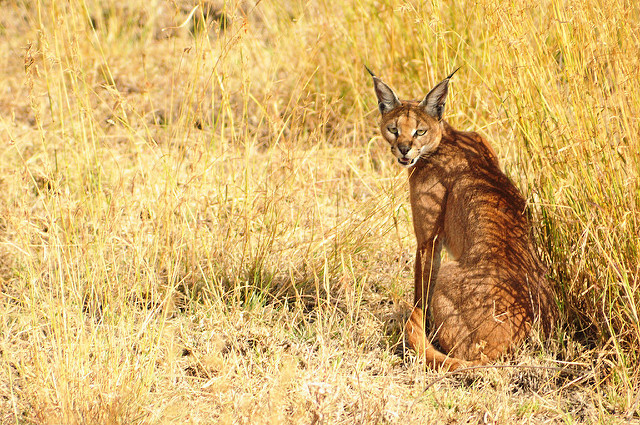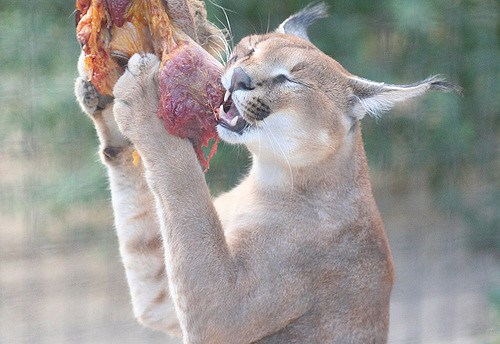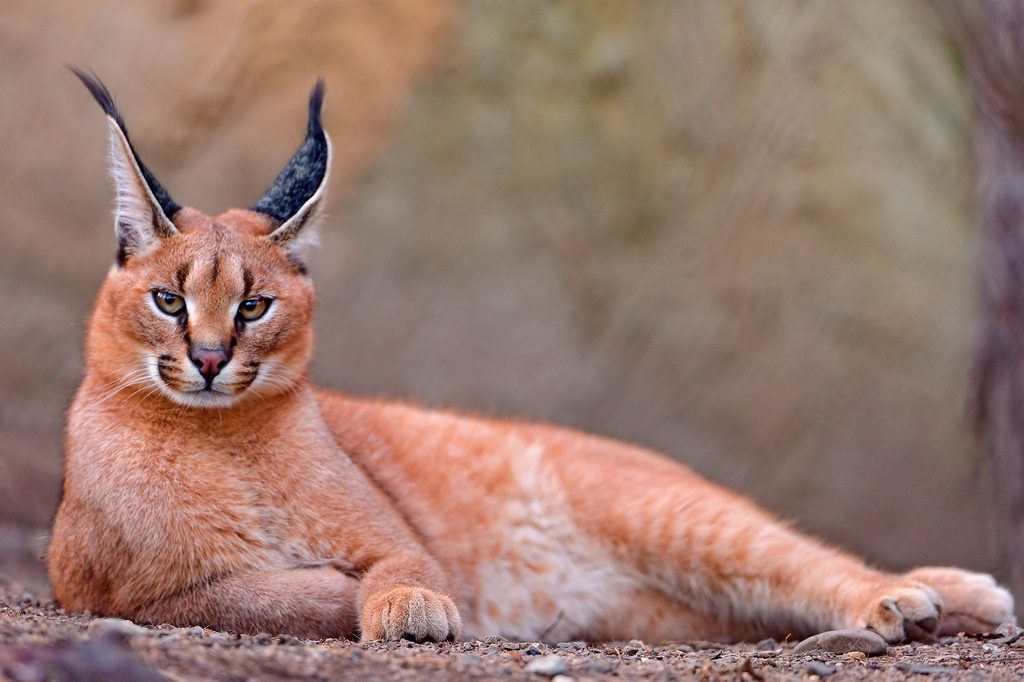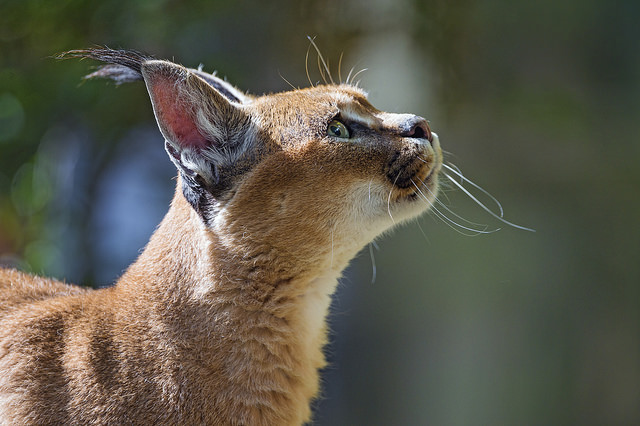Found in many parts of Africa, the caracal is often overlooked by its more popular cousins, the lion and the cheetah. They can be found lurking in the high Atlas Mountains in Northern Africa, wandering around the Sahara Desert, or in the dense wilderness of South Africa. When going on a safari trip to scout for big cats, don’t forget the small guys and be sure to add the fascinating caracals to your list. Get ready to arm yourself with some knowledge of one of Africa’s coolest cats, here are 7 things you didn’t know about the caracal.

Courtesy of Gopal Vijayaraghavan/Flickr.com
They’re medium-sized cats often mistaken for lynxes
Just by looking at their mugs in photos, you’d think they’d be imitating jaguars or pumas, but they’re smaller than most people think. Halfway between your cat Mittens and a lion, the caracal only weighs up to 40 pounds and can reach up to 39 inches tall. They look very similar to lynxes, but you can detect the difference by their fur patterns. Lynxes have spots while the caracals do not.
They can outrun you
They’re not quite cheetahs but they’ll give you a run for your money (literally and figuratively). They are incredible runners that can go as fast as 50 miles per hour. This gives them an advantage over their prey since they can outrun antelopes, hares, hyraxes and other mammals for their meals.

Courtesy of thy/Flickr.com
They have a methodical way of eating
Once the caracal catches its dinner, unlike his cat cousins, he will not start devouring everything in sight. Instead, the caracal will systematically remove the fur of the carcass since he cannot properly digest their coat. If you ever watch a caracal in action on safari, stick around to watch how he removes the fur with his sharp claws before dinner is ready. Or if you’re watching them in a zoo, you’ll notice at feeding time that the fur is always removed before it is given to the cats.

Courtesy of Tambako The Jaguar/Flickr.com Creative Commons 2.0
Sadly, they’re often killed by farmers
Many farmers consider caracals to be pests since they do come after their livestock to feed. In retaliation, farmers leave out poison or shoot them on the spot to protect their livestock. There has been many humanitarian efforts to fight against farmers terminating the cats and it’s declared illegal to kill them in many areas of North Africa. However, in several countries like Namibia and South Africa, it’s permitted to hunt them since they’re viewed as problem animals and invasive.

Courtesy of Cliff/Flickr.com
They save some for later
A caracal will save some of its catch by storing it away in a hidden place (most likely in a bush or a hole) to come back and eat it for later. Most cat species will eat as much as they can in one sitting, but the caracal knows its best to ration its food and store its leftovers. This way, the cat does not have to worry about catching another meal so soon.

Courtesy of publicdomainpictures.net
A female can give birth to up to 6 kittens
A pregnant female caracal will carry her kittens for up to 80 days before giving birth and it’s common to deliver up to six babies. Unlike many animals in the kingdom, the kittens do not walk right away, instead they’ll lay with their mothers for a few days before opening their eyes and taking their first steps. After a year of staying with their mothers, the kittens are mature enough to go out on their own. One thing that can be said, we cannot get enough of their cuteness.
Birds are threatened by them
You’d think because birds can fly, they have no reason to fear the caracal right? Wrong. A caracal can jump so high that they’re often seen snatching birds in mid-air up to 16 feet above ground. In some cases, their hunting skills are so adept that they can kill as many as 10 birds in one leap which is why former Persian royalties bred them as personal pets for entertainment. The ancient rulers would spend a lot of free time watching them kill pigeons which coined the phrase, “to put a cat among the pigeons.”
More from AFKTravel:
Fun Facts You Didn’t Know About Fennec Foxes
The Incredible Wildlife Of Ethiopia’s Simien Mountains

